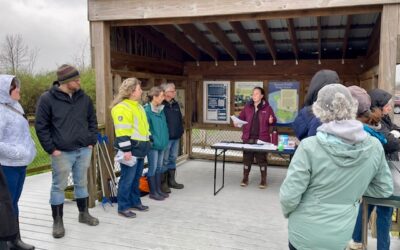It has been said that one of homo sapiens’ distinguishing characteristics is to give names to things. It’s easy to see how the naming of things is directly related to preserving that knowledge and passing it on to the next generation. Indeed, it is well established that we have a need to name and be named. Why do we do this? We name things to identify, symbolize, describe, refer, simplify, and organize them, to give them a place. We also name things in order to tame them, to make them more personal. To name a thing is to own it.
We see that throughout our history and our mythology. In Genesis (1:20-26, 2:19-20), the Creator presents all creatures to Adam, who then names them, and “whatsoever Adam called every living creature, that was the name thereof.” No less an authority than Confucius tells us that “the beginning of wisdom is to call things by their proper names.” The Greeks had in their pantheon goddesses of vengeance and justice called the Furies, but one did not use that name, or their individual names. One referred to them as “the kind ones” – after all, they might hear you, and come around for a visit. Shakespeare has some fun with this idea of invocation or summoning in Henry IV pt 1: when Glendower portentously states that he “can summon spirits from the vasty deep,” Hotspur replies “Why, so can I, or so can any man, but will they come when you do call for them?” Names are equally important in more prosaic folklore – one of the common story lines of ancient (and modern) magic tales is the quest to find the true name of an enemy, and the admonishment to guard your true name very closely. In a world that needed magic to explain it, an invocation was often enough to summon a being or spirit to you. Knowing its name meant one knew its nature, and that allowed one to control it. Remember the Grimm fairy tale of Rumpelstiltskin; the miller’s daughter avoids losing her child to the dwarf by guessing his name after the dwarf is careless and lets it be heard.
So what’s in a name that’s relevant today? The wildlife we see around us, plants and animals, all have common names and scientific names. These names can tell you quite a bit – consider:
There are two members of the birch family that we call hornbeams – the common hornbeam, also called musclewood, blue beech, or ironwood, and the hop hornbeam, also called ironwood. These trees share a characteristic of being extremely hard and durable, as one might gather from “ironwood.” The word “hornbeam,” however, tells us that as well – the name is a combination of two older English words: horn, which connotes hard, and beam, which means wood (J.R.R. Tolkien fans will recognize the ent Quickbeam’s name as being older English words meaning living and wood).

The tulip tree, Liriodendron tulipifera, is a very old member of the magnolia family. The Seneca nation used this tall, straight tree to build dugout canoes. The juvenile foliage resembles a silhouette of a tulip, and many believe that is the source of the name. The actual reason is the very showy blossom, which looks like a green, gold, and orange miniature tulip. The scientific name actually tells us that – “tulipifera” means “tulip bearing” or “tulip holding.”

Cottonwood and quaking aspen are both members of the poplar family (genus Populus). We recognize them by the characteristic sound they make in a breeze – that rustling sound that invokes Summertime in this part of the world. The sound is a product of the shape of the leaf’s stem, or petiole: the cross section is triangular, which allows the leaf to tremble in a breeze. The quaking aspen, Populus tremuloides, takes both its common and scientific names from this characteristic. We all know the cottonwood derives its common name from the cotton-like seed clusters it produces each year. But did you know its scientific name, Populus deltoides, describes the triangular or delta shape of the leaf.
Otters, Lutra canadensis, are once again in evidence at the Refuge. This relative of the mink and weasel is common through northeastern North America, and is known to be active and athletic, able to bend and twist with ease in the water. The name, Lutra canadensis, tells us that – “canadensis” is fairly obvious, but “lutra” derives from a very old word connoting strong and lithe. One of the most illustrative scientific names belongs to the humpback whale. These creatures were well known on the east coast of North America, and are distinguished by very long, pronounced pectoral fins. His name, Megaptera novaeangliae, loosely translates as “Big-wing of New England.”

These are only some examples of what names are and what they mean. A fun exercise might be to observe one of the Refuge’s creatures, look up its name, and see if you can derive how the creature came to bear that name. Start with the Sugar Maple, Acer saccharum. Enjoy!




